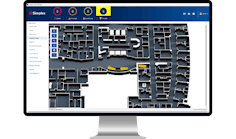Grill The Fire Expert: Vague Language Causes Lockup
Q: My inspector disconnected the power supply to my electromagnetic door locks and they did not release (unlock) the exit doors. He said standby batteries weren't permitted to keep the exits locked if the AC power was lost. Why would door security not be allowed to have battery backup?
A: In certain instances, they are permitted to have battery backup. The problem seems to be caused by where the AHJ disconnected power to your door's power supply. Throwing the breaker to your magnetic locks' remote power supply would not necessarily cause it to “unlock” the doors.
The unfortunate wording in this section of NFPA 72 is notorious for causing lots of confusion in the life safety industry. Antiquated ideas on how doors can be locked are the basis for your problem. The rules for these electromagnetic locks installed at the tops of doors used to hold them closed magnetically are found in a section called “Door Unlocking Devices.” (NFPA 72, 6.15.7, 2002 and 6.16.7, in 2007.) It is common to state that you “release” these doors when you de-energize these devices, but the section before the unlocking rules is named “Door Release Service.”
The “Door release” rules in NFPA 72 refer to the magnetic door holders that are used to keep fire doors open during non-fire conditions. When these are released, the doors swing shut . When magnetic locks are “released,” the doors “ open.” If these sections were re-named “Smoke-Door Release Service” and “Preventing Free Egress” a lot of misunderstanding could be eliminated.
First to be cleared up would be the fact that the “door unlocking” section has never applied to rim-strike “locks” because these “locks” do not alter the function or otherwise prevent the intended emergency operation of the exit door. The second misunderstanding to be eliminated would be to make clear that this section includes these new-fangled electromagnetic security devices, which are not really locks in the traditional sense; and acknowledge the fact that these devices actually do “release” doors, but not “smoke-doors.”
If the AHJ had killed primary power to the fire alarm control panel (FACP), then your door's power supply would have killed power to the electro-magnetic locks. Since the AHJ killed power locally (only to the door power supply) and not at the FACP, then the door power supply applied its own internal standby battery power, and kept the doors secure.
During a fire alarm these doors have to unlock. They must also unlock when the FACP loses its primary power but not the AC loss of the door's power supply alone. If the power supply for the door's magnetic locks lost its AC power, but the FACP still had its AC power intact, then the battery back-up provided by the door lock power supply would be permitted to keep the doors secure.

